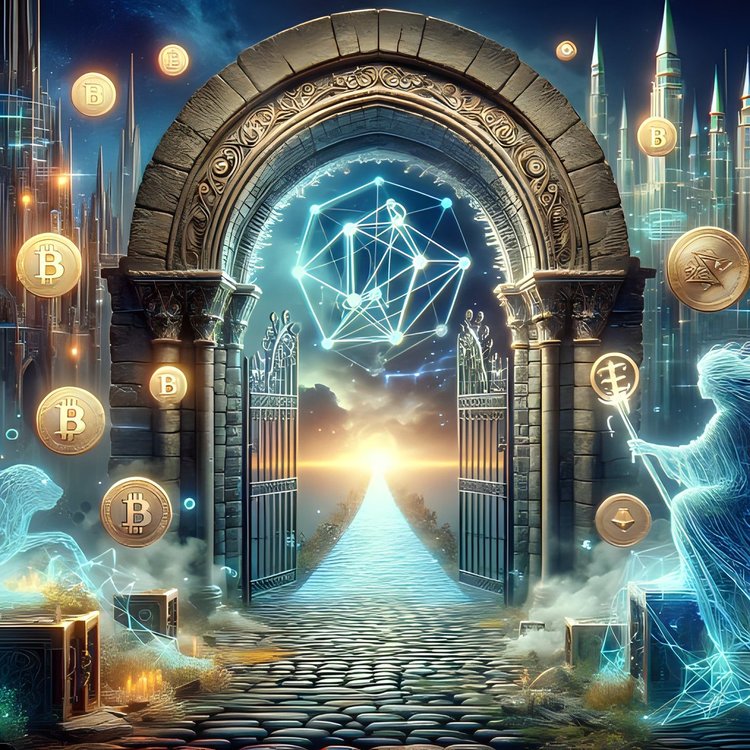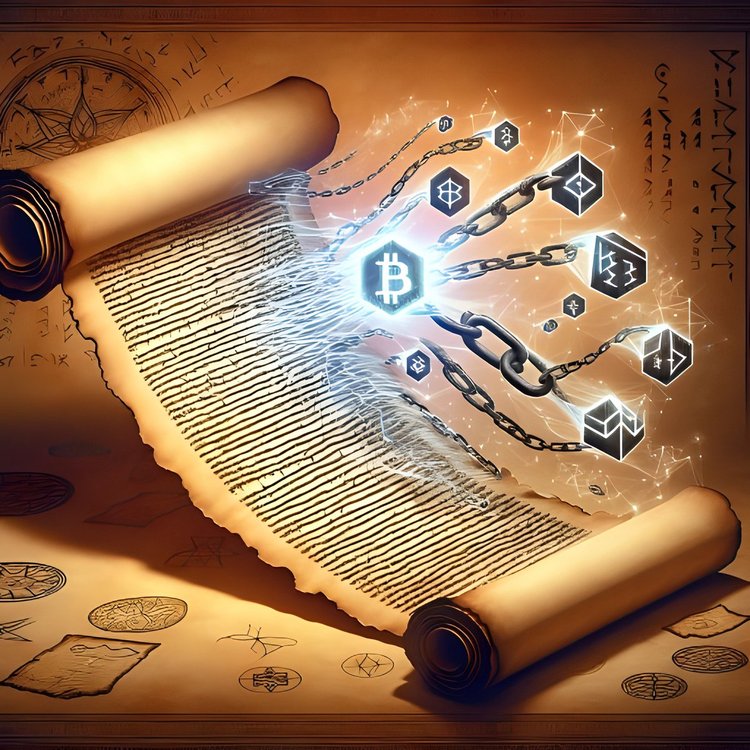The Layman's Guide to Blockchain Transactions
The Layman's Guide to Blockchain and Crypto Transactions
Have you ever found yourself lost in a conversation where everyone seems to speak a language peppered with words like "blockchain," "network congestion," and "validators," only to nod along while understanding none of it? You're not alone. It's like being the only person at a party who doesn't get the joke. Frustrating, right?
Recently, a friend shared their personal sentiment that perfectly captured this feeling—a snapshot of bewilderment in the face of a "failed transaction" message on a crypto platform. The terms were technical, the situation was complex, and the confusion was palpable. "What do they mean by chain? Like my transactions or the apps?" he texted.
This is the reality for many stepping into the burgeoning world of digital currency, where the excitement of innovation often comes hand-in-hand with the haze of complexity. But fear not, because understanding the basics of blockchain and crypto transactions doesn't require a tech wizard's expertise. It's about breaking down the high-tech speak into everyday language.
Imagine blockchain as a group text message that never stops. Everyone in the group sees every message (transaction), but once a message is sent (a transaction is made), it can't be unsent. The history is there, transparent and unchangeable, a digital stone tablet in a world of disappearing snaps and stories. Let's take a journey through this digital landscape, using analogies rooted in the familiar to map out the unfamiliar. By the end, the hope is to turn those head-scratching moments into nods of understanding.
Recently, a friend shared their personal sentiment that perfectly captured this feeling—a snapshot of bewilderment in the face of a "failed transaction" message on a crypto platform. The terms were technical, the situation was complex, and the confusion was palpable. "What do they mean by chain? Like my transactions or the apps?" he texted.
This is the reality for many stepping into the burgeoning world of digital currency, where the excitement of innovation often comes hand-in-hand with the haze of complexity. But fear not, because understanding the basics of blockchain and crypto transactions doesn't require a tech wizard's expertise. It's about breaking down the high-tech speak into everyday language.
Imagine blockchain as a group text message that never stops. Everyone in the group sees every message (transaction), but once a message is sent (a transaction is made), it can't be unsent. The history is there, transparent and unchangeable, a digital stone tablet in a world of disappearing snaps and stories. Let's take a journey through this digital landscape, using analogies rooted in the familiar to map out the unfamiliar. By the end, the hope is to turn those head-scratching moments into nods of understanding.

The Group Text Analogy: Understanding Blockchain
Imagine a group text. It's where plans are made, photos are shared, and inside jokes are born. In this group, once you send a message, it's there for everyone to see. If you try to claim you didn't send that 2 AM selfie, well, the evidence is right there. Blockchain works a lot like our group text. It's a chain of information blocks, and each 'block' is like a batch of messages. When you make a transaction—like sending cryptocurrency—it's like sending a message to the group.
Everyone on the network can see this 'message,' and once it's added to the 'chat,' it cannot be altered or deleted. It's transparent, it's permanent, and it's a shared source of truth. Why does this matter? In the financial world, this is revolutionary. No more hiding transactions, no bank errors in your favor or otherwise, and a clear record of who owns what. It's like having a shared ledger where everyone's balances and transactions are visible, reducing the chance for fraud and mistakes.
Everyone on the network can see this 'message,' and once it's added to the 'chat,' it cannot be altered or deleted. It's transparent, it's permanent, and it's a shared source of truth. Why does this matter? In the financial world, this is revolutionary. No more hiding transactions, no bank errors in your favor or otherwise, and a clear record of who owns what. It's like having a shared ledger where everyone's balances and transactions are visible, reducing the chance for fraud and mistakes.

Understanding Transactions as Messages
In our group text scenario, not every message is just chitchat. Some are important—like confirming a dinner date or a pickup time. In the blockchain, these important messages are transactions, and before they're added to the group chat, they need a thumbs up from everyone.
This is where it gets a bit technical, but stay with me—it's no harder than planning that dinner where everyone has a dietary restriction. In blockchain, a transaction isn't finalized just because you sent it. It needs to be confirmed by others in the network—kind of like how you need RSVPs before you can make a reservation. Each transaction is checked to ensure it's valid. Do you have enough cryptocurrency to send? Is your digital wallet secure? Once these questions are answered, the transaction is approved to join the blockchain. But who's checking these transactions?
This is where it gets a bit technical, but stay with me—it's no harder than planning that dinner where everyone has a dietary restriction. In blockchain, a transaction isn't finalized just because you sent it. It needs to be confirmed by others in the network—kind of like how you need RSVPs before you can make a reservation. Each transaction is checked to ensure it's valid. Do you have enough cryptocurrency to send? Is your digital wallet secure? Once these questions are answered, the transaction is approved to join the blockchain. But who's checking these transactions?
The Role of Validators: Digital Moderators
In every group chat, there's usually a moderator or two—the organized ones who keep track of plans and make sure everyone's on the same page. In the blockchain, these moderators are called validators. Validators have a crucial role. They use powerful computers to check the transactions, ensuring everything is in order.
Think of them as bouncers at the club, checking IDs before letting anyone in. If your transaction is the ID, the validator is the one who gives it a thorough look-over before giving you the nod to go through. These validators are essential to maintaining the trust and integrity of the blockchain. Without them, there would be chaos—like a group chat without any ground rules.
Think of them as bouncers at the club, checking IDs before letting anyone in. If your transaction is the ID, the validator is the one who gives it a thorough look-over before giving you the nod to go through. These validators are essential to maintaining the trust and integrity of the blockchain. Without them, there would be chaos—like a group chat without any ground rules.
Blocks and Chains: Batching and Ordering Messages
Now, let's talk about how these 'messages' are batched together. In blockchain, several transactions are grouped into a 'block.' It's like when one person in the group chat sends a burst of texts—updates, photos, GIFs—all at once. This block is then added to a chain of previous message batches, creating a clear, chronological record of all transactions.
This record is unbreakable. Once a block of transactions is verified and added to the chain, it's like sending those messages—you can't take them back. They are linked together by unique digital fingerprints, called hashes, making sure that each block is in its rightful place, forming a chain of blocks: hence, a blockchain.
This record is unbreakable. Once a block of transactions is verified and added to the chain, it's like sending those messages—you can't take them back. They are linked together by unique digital fingerprints, called hashes, making sure that each block is in its rightful place, forming a chain of blocks: hence, a blockchain.
Congestion Explained: Too Many Messages at Once
But what happens when everyone tries to send messages at the same time? Congestion. Just as your phone buzzes non-stop during a heated group debate, a blockchain network can get congested with too many transactions waiting for validation. Remember our validators, the bouncers? They can only check so many IDs at once. If too many people show up, there will be a line.
And just like in real life, some might offer to pay a little extra to skip ahead—that's what we call a transaction fee. In times of congestion, fees can go up because everyone wants to be at the front of the line. When your friend's transaction didn’t go through, it was likely because of this digital traffic jam. It's frustrating, just like when your message doesn't send during a network overload. But it's not a flaw in the system—it's a sign that a lot of people are using and trusting this revolutionary new way to send and receive value.
And just like in real life, some might offer to pay a little extra to skip ahead—that's what we call a transaction fee. In times of congestion, fees can go up because everyone wants to be at the front of the line. When your friend's transaction didn’t go through, it was likely because of this digital traffic jam. It's frustrating, just like when your message doesn't send during a network overload. But it's not a flaw in the system—it's a sign that a lot of people are using and trusting this revolutionary new way to send and receive value.

Final Thoughts
Blockchain is a shared journey, a step into a world where financial transactions are open and verifiable. It's a world where, in essence, everyone helps keep the ledger. The confusion faced at the outset is just the first small step into this new terrain. As you walk further, the path becomes clearer, and the once-daunting lingo becomes part of your vocabulary.
Conclusion
There you have it—a whistle-stop tour of the fundamental concepts of blockchain and cryptocurrency transactions, minus the headache-inducing jargon. This is just the beginning, and there's much more to explore in the burgeoning landscape of digital currency. And remember, it's perfectly normal for this all to feel overwhelming at first. But with each step, transaction, and newly minted block on the chain, clarity improves.
So, keep exploring, asking questions, and learning—the digital future is for everyone, and it's being written one block at a time. For those who are just starting their journey, patience is key. The language of blockchain is universal, and with time, it will become as familiar as texting a friend. The future is decentralized, and now, you're speaking its language!
So, keep exploring, asking questions, and learning—the digital future is for everyone, and it's being written one block at a time. For those who are just starting their journey, patience is key. The language of blockchain is universal, and with time, it will become as familiar as texting a friend. The future is decentralized, and now, you're speaking its language!
Your Next Step Awaits
Curiosity sparked? This is just the beginning. Continue your exploration of the digital finance realm by subscribing to Spektre. There, you can delve deeper, unlock comprehensive guides, and join a community poised on the brink of the future. Ready to turn curiosity into knowledge and action? Your next step is clear. Visit us again and discover all that you need to navigate the digital age with confidence and insight. See you there!

